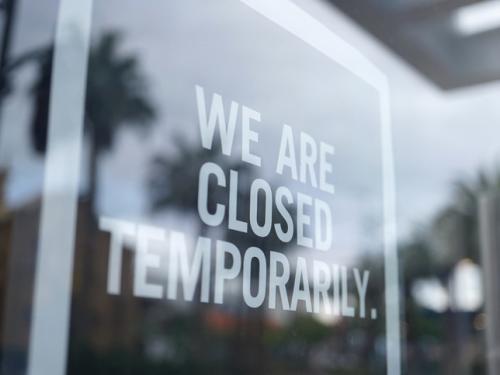- Talent acquisition (TA) drives significant business value, but many still treat TA as a staffing function. Rethinking recruitment success metrics of budget, time and quality can demonstrate the value of TA to CEOs.
- New systems and processes for TA should be rooted in savings of time, money and value. Don’t over-engineer interactions with candidates. Rather, find ways to specialize recruiters’ roles and work distribution as TA evolves.
- Through the reverse recruiting movement, Jerome Ternynck has gathered thousands of talent acquisition leaders around a shared goal of giving back to underprivileged candidates.
The past two years have been anything but business as usual for talent acquisition (TA) teams. As the early pandemic led to record-high unemployment rates, job seekers flooded the market and brought expectations of flexible, remote work.
Now, with an impending recession and new waves of high-profile layoffs underway, recruiters find themselves in yet another sea change. With a once-again flooded job market on the horizon, talent acquisition teams may even be questioning their impact on their organizations.
Jerome Ternynck views these conditions differently. The founder and CEO of SmartRecruiters feels that turbulent times are a perfect opportunity for transformation within talent acquisition.
On an episode of the TribePod podcast, Ternynck shares his take on refreshed metrics, a new business case for recruiting, what should change in TA — and what shouldn’t — and his powerful stance on reverse recruiting.
Read on for this recruiting expert’s take on what’s next in the wide world of talent acquisition.
Kickstarting a Talent Acquisition Transformation
Ternynck acknowledges that there are multiple sides to the changes in the world of talent acquisition. Although many recruiters and TA leaders may be wondering if their careers are being threatened, Ternynck’s take is an optimistic one.
“There is opportunity, and there is hope. And I think the opportunity here lies in this [being] the right time to drive a proper transformation of talent acquisition,” Ternynck says.
Historically, TA has been a transactional support function. As a result, the metrics for recruiting success have been focused on hiring cheaper and faster — a race to the bottom that doesn’t actually reflect the true business value of TA, Ternynck says.
Even though executives continue to prioritize hiring top talent, TA is often treated as a rebranded staffing function. But Ternynck believes the time for change is now.
“In this crisis, where bold ideas and bold actions are possible — necessary, sometimes — there is really an opportunity for talent acquisition leaders to lean in and drive that transformation,” Ternynck explains.
Redefining Recruiting Metrics
Time to fill and cost to hire have typically been treated as the golden standard of recruiting metrics. But these measurements don’t always tell the whole story of hiring quality.
Hiring success is the ability to hire amazing talent on demand, Ternynck concedes. And that is every CEO’s goal for their company. But it’s time we reframe the three core metrics of budget, time and quality — and change how we calculate each one.
Metric 1: Budget
The budget metric has typically been synonymous with “cost per hire,” and CEOs often ask if and how to lower that cost.
Ternynck advocates for replacing cost per hire with the total cost of recruiting for the role divided by the new hire’s salary. From there, you can compare that budget metric to industry competitors or internally to other roles to understand how the costs of different functions compare within the company.
As a benchmark, this number also helps start key conversations with your CEO around the impact of investing more money in recruitment.
Metric 2: Time
The traditional time metric for recruiters is time to fill, a straightforward measurement of how long the recruitment to hiring process takes.
Instead of time to fill, Ternynck’s recommended key metric is hiring velocity, or the percentage of jobs that are filled on time. This measurement is useful for conversations with executives because it helps them to quickly see how many business decisions will be implemented by the team.
If your hiring velocity is 60%, your CEO can expect that just 60% of the work will get done. As a result, hiring velocity and business velocity are closely connected. Armed with this metric, you can incentivize leadership to support more advanced planning and to drive hiring.
Metric 3: Quality
Most companies measure quality about two years after hiring, and they base the measurement on performance and other criteria.
Through the talent acquisition suite of SmartRecruiters, Ternynck has introduced a net hiring score, which functions similarly to a net promoter score. Instead of two years later, they measure quality 90 days in by asking managers to rate the hire on a scale from one to 10. They also ask the hire how much of a fit the job is, also on a scale from one to 10.
To calculate the quality benchmark overall, subtract the number of hires with lower ratings (one to five) from the highly-rated hires (nine or 10). Like an NPS, the result is a positive or negative number that provides a pulse on whether you’re hiring more perfect fits than less-than-great fits.
Armed with all three of these metrics, TA leaders can have meaningful CEO conversations about not only their results but also the strategic value they are driving to the business.
The Business Case for Doing Things Differently
When it comes to making changes in the talent acquisition space, your first priority should be building your business case.
“[It had] better have some hardcore savings in it,” Ternynck advises. Root major changes in real savings: time, money and value.
SmartRecruiters has helped high-profile brands replace applicant tracking systems with a modern TA suite. Ternynck has seen first-hand how consolidating your TA system results in technology cost savings. Paying for one centralized suite often costs less than several outdated and poorly-synced solutions.
Modern TA suites also save sourcing dollars by converting job seekers into candidates at much higher rates than older systems, and the tech updates help increase teams’ efficiencies through collaboration and automation.
Ternynck cautions leaders about over-automating one item in particular: candidate interaction. While many parts of the recruiting process can be digitally streamlined, his advice is to avoid over-engineering engagement with candidates.
Automate with great care, and refrain from putting old processes into new systems. “Process eats technology for breakfast,” Ternynck says. “So keep it simple.”
More modern TA systems allow the recruiter role to continue to evolve. Through better-defined roles and work distribution, recruiters can truly move into a talent advisor function. When supported by the proper processes, as Ternynck puts it, “They’re bar-raisers.”
Reverse Recruiting: Giving Back To Candidates
In addition to his decades of recruiting experience, Ternynck has also started a powerful movement in the talent acquisition space to give back to those candidates who need it most.
The reverse recruiting movement encourages people to offer mentorship and professional training to incarcerated individuals and other underprivileged job seekers.
Ternynck gathers thousands of TA leaders around a shared goal of supporting people who are out of work and providing opportunities for recruiters to work for candidates rather than companies.
For some organizations, reverse recruiting isn’t just a chance to give back and build their brand — it’s also helped them discover amazing talent.
Ternynck recounts hiring an individual who was looking for a job after 25 years in prison. His talents for staying calm under pressure, easing tension and showing resilience — not to mention a strong work ethic — made him a great hire and a top contributor.
The Future of Talent Acquisition
Through new metrics, building a business case, and initiatives like reverse recruiting, talent acquisition offers significant value to both organizations and candidates alike.
Even as the talent acquisition space continues to shift over time, values-driven leadership like Ternynck’s ensures that the future of TA is a bright one.
This article is based on an episode of TribePod, a HR community podcast by Proactive Talent, a recruiting, employer brand and retention consulting firm. Subscribe via Apple, Spotify or wherever you listen to podcasts for more insight into best practices in human resources.


